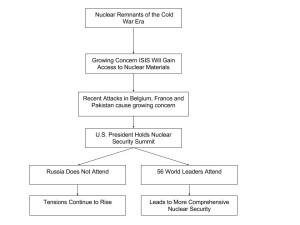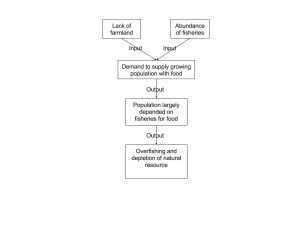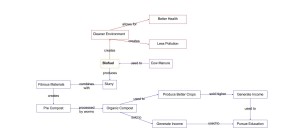Human Extinction Hazards
- Identify and discuss a Human Extinction Hazard from the lesson material or individual research. Write a post of 150-200 word post detailing the selected Human Extinction Hazard and possible mitigation strategies.
- Research and discuss a recent event that ties in with the selected Human Extinction Hazard. Write a 150-200 post summarizing the event and sure to cite in references.
- Draw a system diagram that highlights how the selected Human Extinction Hazard and mitigation techniques could be connected. Include at least 5 nodes.
1. The Human Extinction Hazard (HEH) I selected for the activity is nuclear warfare. While the threat of nuclear war has ensued since the creation of these weapons nearly a century ago, most notably during the Cold War, this HEH is becoming increasing relevant. This is due to the fact that the concept of mutually assured destruction is not as strong of a deterrence as it used to be. This can be seen with nations such as Iran or North Korea, which arguably aim towards having nuclear weapons, that call for the total annihilation of other nations. Possible mitigation techniques are those that are being employed. Specifically, sanctions on countries listed above serve as mitigation strategy. However, the current geopolitical environment makes the enforcement of sanctions difficult. This can be seen when support from nations like China to North Korea lessen the effect. In addition, recent developments in techniques to circumvent sanctions are also problematic. The recent release of the Panama financial records is a testament to this.
2. In an effort to combat the threat of nuclear war, summits have been held throughout recent history. Recently, this took form in a summit hosted by the President of the United States, Barack Obama. Specifically, this was a Nuclear Security Summit held in March of 2016. While this summit did include over 50 world leaders with varying concerns, the main focus seemed to be on keeping nuclear material out of the hands of ISIS. Both Belgium and Pakistan sent dignitaries instead of their respective heads of government in light of the recent terror attacks in each country. The importance of this discussion is even further highlighted by the fact that the perpetrators of the recent attacks in Paris and Brussels were investigating nuclear sites. President Obamas administration stated that they are aware of over 2000 pounds of nuclear material around the world that could potentially be used to make a weapon.
Reference:
Liptak, K. (n.d.). Obama to host world leaders for nuclear summit. Retrieved April 15, 2016, from http://www.cnn.com/2016/03/29/politics/obama-nuclear-summit-world-leaders/




